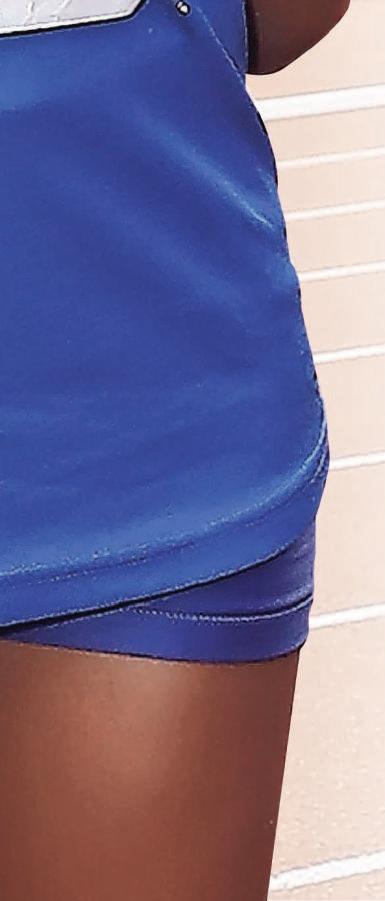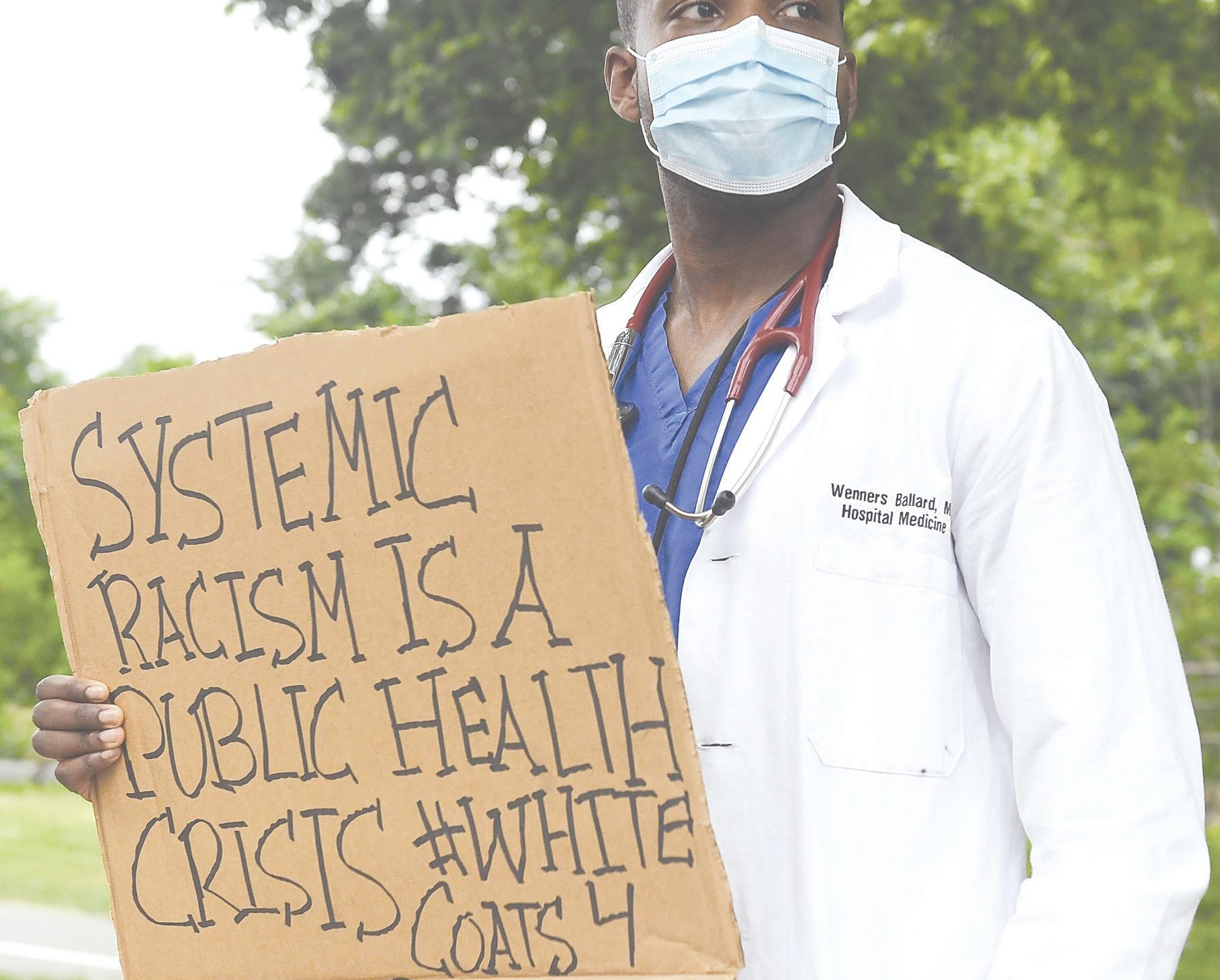
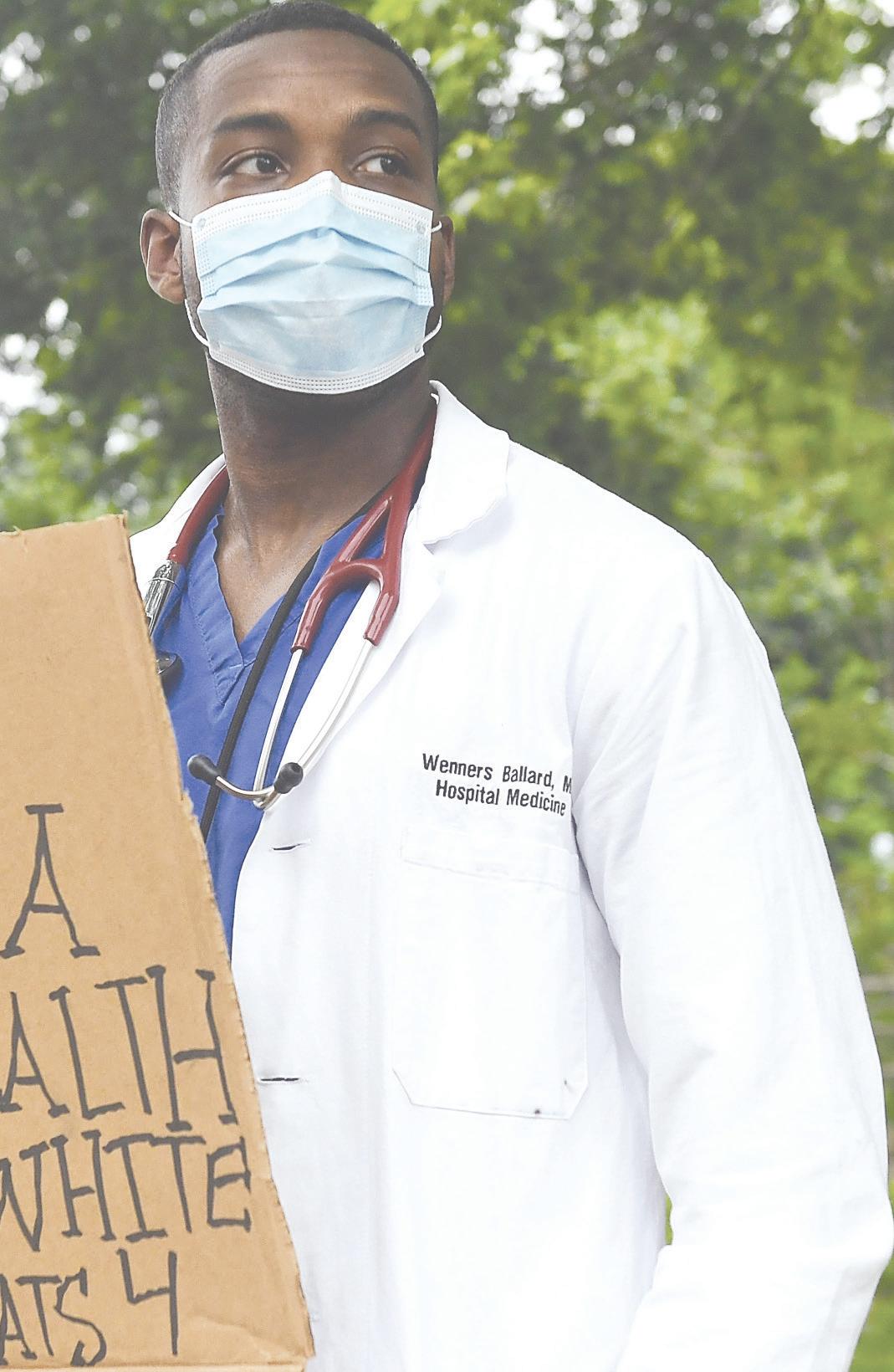
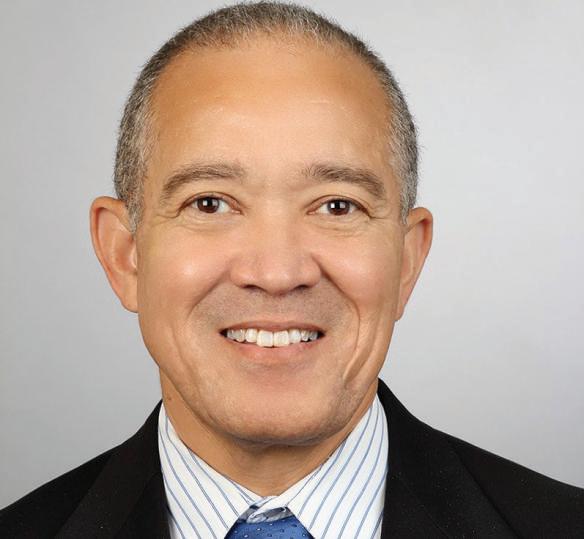




Months ago, Ja Morant jeopardized his NBA career, generational wealth and more when video showed him casually playing with guns. While suspended from gameplay, Morant said he got the help he needed to deal with his life’s pressures. Recently, while rollin’ with one of his homies, Morant was again about the gunplay. His homie, who knew the blowback Ja got the frst go-round, still chose to live-stream their antics. Te resulting opinions? Ja needs a new crew. Ja needs to accept personal responsibility. Ja needs to stop playin’ “hard.” Te Grizzles (his team) and the NBA need to invest more in player development, etc. While some or all of that may be true, no one’s mentioning the AR-15 pins some GOP lawmakers foss afer each mass shooting, or the Christmas cards with GOP lawmakers and family members strapped with weapons of war, or the NRA’s full-throated defense of whites parading their guns in public, yet dead silence or condemnation when it comes to Black gun carriers. In Ja, we see our brother who needs help. But so does America.

Some Texans are gung-ho about the move requiring placement of the 10 Commandments in every classroom of every public school, as if this act will curb gun violence or improve morals. Are we really that infantile as a people regarding how our spiritual walk works? Hell, the fact that the promoters of this bill supported putting children in cages, continually demonize the poor, and cheer on the mistreatment of Blackfolk should tell you something. If not, let me leave you with the words of U.S. Senator Cory Booker: “Before you speak to me about your religion, frst show it to me in how you treat
other people; before you tell me how much you love your God, show me how much you love all His children; before you preach to me of your passion for your faith, teach me about it through your compassion for your neighbors. In the end, I’m not as interested in what you have to tell or sell [or post in a TX classroom] as in how you choose to live and give.”
As they say, “If you’re gonna tell the story, tell the whole story.” Tat’s what we need to do regarding Brown v. Board of Education. Te famous decision came down on May 17, 1954, legally ending segregation in public schools. Tat’s the part of the story we tell. But what too ofen goes unspoken, several counties and cities literally closed down their public schools, some for nearly three years, rather than have their kids sit next to Black children in classrooms. Some municipalities changed their laws to use public tax dollars to fund private schools. Tey were afectionately called “segregation academies.” So, cities used Black tax dollars to fund their kids’ education while ours got none. And some cities fought school integration up into the 21st century. Ironically, schools today, in some places, are more segregated now than in the 1940s. So, let’s cheer the courage and brilliance of Turgood Marshall, Charles Hamilton Houston and the NAACP Legal Defense Fund. But just know, even with our “victories,” the struggle always continues.

• Is there a generational divide in Black America?
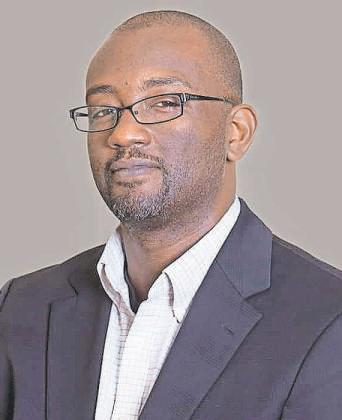
• Elder Spotlight: London Wilson Sr.
• Klein Forest girls win two track golds at State!

 By ReShonda Tate
By ReShonda Tate
Shontay Newsome has waited for the day she could walk across the stage and receive her college degree from Prairie View A&M University. She rose early on graduation day, May 13, headed to PV, and encountered what she calls the worst experience of her life.


“I cannot even begin to explain how PV dropped the ball and ruined this moment for myself, along with the other graduates,” Newsome said. “A moment that we all worked so hard for, that our family and loved ones traveled from different cities and states to celebrate, that was supposed to be so special, a moment that we can NEVER get back… was absolutely ruined by PV’s poor decision-making due to the weather.”
PV officials say they had been monitoring the weather all week. At one point, they decided to move commencement from the field to the William “Billy” J. Nicks, Sr. Building (“Baby Dome”). After student protest, they moved it back outside since they say the forecast only called for light rain. However, early Saturday morning, a storm ensued, prompting administration to delay commencement and move it back inside, which meant only a fraction of the guests could attend.
The pounding rain exacerbated parking, and families found themselves immobile in traffic for hours.
“The police directing traffic did a horrible job. Traffic was so backed up from families trying to find parking for the graduation. It made me THREE HOURS late to my own graduation. I headed out to the graduation at 6:30a.m. from Katy and I didn’t even arrive on campus until 10a.m. Unbelievable,” Newsome said.
Families, many of whom had traveled from out of town, were in tears as they were forced to watch the graduation via live stream on their cell phones in the car, as they waited in traffic. Many of those that did make it through, including the elderly, were forced to stand outside in the pouring rain after officials stopped allowing people in because of fire code issues.
“This is absolutely, positively the worst experience for these graduates.
How dare Prairie View A&M University allow this to happen?” said parent Kimberly Belton-Smith. “Common sense says DO NOT PLAN to have the commencement ceremony outside. Stop being so cheap and pay for a venue that will accommodate all graduates and guests. People are literally standing outside in the pouring rain AND lightning. To see these young people in their nice attire and shoes in hand, running in the rain, is just awful. Sad…sad…sad. And STOP trying to use the darn mini dome. The name is MINI so it doesn’t take a rocket scientist to figure out that it WILL NOT accommodate the graduates.”
Graduates were heartbroken as many say they weren’t acknowledged by the administration, names were randomly called and many missed the event altogether.
“This graduation was totally unacceptable. My child, along with other graduates, worked extremely hard and did not get a chance to walk across the stage. I’m totally disappointed in how PV handled this whole inclement weather issue. Six tickets were issued out to each graduate on Friday IF the weather was bad and not one ticket was used. Also we sat in traffic for 2.5 hrs for my daughter to still MISS her graduation. Something should be done for the graduates that missed their graduation,” said Dana Dockery, whose daughter Khyllia Barnes graduated with a Master of Science Accounting degree.
Contrary to what many believed, the university says they did have a contingency plan. But a storm of issues upended an event that had been months in planning.
“We are truly disappointed that such an important milestone in the life of a college student was interrupted by an extreme shift in weather conditions,” said Acting President Dr. Michael McFrazier. “We acknowledge the anger and frustration graduates and their guests are experiencing. Be assured that the University administration is reviewing all aspects (venues, parking, etc.) of conducting commencement at PVAMU and will develop a plan to improve the execution of the ceremony to ensure a positive, joyous experience for graduates, parents, friends, and visitors.”
“It was ridiculous. I didn’t get to make it in to see my child walk. We made the best of it and moved on. I just hope for the future it’s better planned out. I wouldn’t want the next graduating class and their parents to experience what we did. I’m just glad it’s over.”
-Dionne Furgerson“How many years has PV been doing graduation now???? An ADEQUATE inclement weather plan should be a no-brainer. We missed my daughter’s graduation, and we left five hours ahead of time. Simply insane.”
-Lisa Carver“Absolutely HORRIBLE experience and the WORST graduation I’ve ever attended!!!!!!”
-Chris Parrish“Stood in the line outside the stadium for an hour in the rain, gates opened for everyone to stand under the bleachers in rain!! Then, I got a call from my goddaughter’s mother to follow the graduates to the Baby Dome to wait inside for another hour and some change for now a late start…10a.m. So we’re now two hours behind schedule, graduates still graduated but in random order and with parents/loved ones in overflow areas watching a screen, unfortunately. It was unfortunate there was a lack of a weather contingency plan, but they pivoted the best they could, I guess. But I have never seen a conveyor belt of graduates before.”
-Ayanna Hill“I watched it online also definitely not the same. We will never get that moment back. It should have been a better plan in place.”
-Veronica Alexander“For what they, PV, had to work with, I think it went off as well as could’ve been for the circumstances.”
-Donna GeeMayors of several major U.S. cities, including Houston’s Mayor Sylvester Turner, recently sent a letter to President Joe Biden calling on him to meet with them to discuss the infux of asylum seekers arriving from the border.
Te letter, written by the Office of New York City Mayor Eric Adams and dated Friday, May 12 (the day after Title 42 ended), was co-signed by Turner and Los Angeles Mayor Karen Bass. Denver Mayor Michael Hancock joined the three original letter authors just days later, urging the action from Biden.
A bill that would ban race-based hair discrimination in Texas workplaces, schools and housing policies is headed to the governor afer the Senate approved the bill. Texas would become the latest state to enact the law in a movement that was inspired by the experiences of two students near Houston who were told to cut their hair or be disciplined.
Senators voted 29-1 to send House Bill 567, by Democratic Rep. Rhetta Bowers of Rowlett, to Gov. Greg Abbott. A gubernatorial spokesperson did not immediately respond to an inquiry about whether the governor supports the bill.
Te bill mostly cruised through the legislative track afer not getting a full chamber vote in the House during the 87th legislative session in 2021. Tis year, a House committee sent it to the full chamber nearly unanimously before representatives in the lower chamber overwhelmingly sent it to the Senate in April.
Versions of the legislation, called the CROWN Act — an acronym for Create a Respectful and Open World for Natural Hair — have been adopted throughout the country as well as in Harris County, the state’s most populous, and the city of Austin.

During a hearing May 9 before the Senate’s State Afairs Committee, a series of witnesses testifed about
how they had experienced the racebased hair discrimination that the bill seeks to prohibit in the state’s education, labor and property codes.
Adjoa B. Asamoah, who co-founded a coalition that champions the CROWN Act, told committee members she conceptualized the law in 2018 to tackle this type of discrimination. She said she had put in work for many years, even before the case of the young men near Houston drew the attention of mainstream media to the problem.
“Preserving and protecting people’s civil, human and individual rights requires a thoughtful and intentional and collective approach,” Asamoah testifed. “It impacts the upward mobility of individuals and families, and it has been the reason far too many children have missed school or had negative educational experiences.”
Asamoah added, “This issue warrants a legislative fx — the CROWN Act is exactly that.”
Enacting the proposal would ensure that all students get a fair chance to be learning in a classroom and
not suspended because of how they wear their hair, State Board of Education member Aicha Davis, who represents Dallas and Tarrant counties, told the committee.
“There are students who aren’t even able to enroll in a Texas [school system] because of their natural hair,” Davis said. “Please make sure another one of our students doesn’t face this kind discrimination by passing the CROWN Act.”
De’Andre Arnold and his cousin can attest to the impact the discrimination can have on school-age youth. Te two were told by administrators at Barbers Hill Independent School District in Mont Belvieu, east of Houston, to cut their long locs or be disciplined.
Both refused and sued the school district over its dress code in a matter that is not yet resolved.
“We have to show that there’s no room in society for people that are unaccepting of others and demonize others for the way they tend to live their lives,” said Arnold, a junior at Louisiana State University, in an interview earlier this year.
All mayors involved in the request for a sit-down with Biden at this printing are African American.

“Te City of Houston is considering options to provide support, but lacks suffcient resources to meet the overwhelming needs of the
migrant community,” said Turner recently. “Currently we are waiting to see what resources the federal government will provide before determining how and if we can assist. In the meantime, we are grateful for our nonproft community and partners like Catholic Charities and Casa Juan Diego that are receiving a limited number of buses, but are also equally under-resourced and overwhelmed. We hope the federal government can provide the needed resources for us to create a structured plan to fully assist.”
“Tis is a matter of grave importance to us as we are experiencing a dramatic influx of asylum seekers and anticipate even more [afer the end of Title 42],” the letter explained. “Our cities have been hard at work doing more than our fair share and we need continued federal governmental assistance.”
VOLUME 92, NUMBER 27 - MAY 18, 2023
Publisher | CEO
Sonceria Messiah-Jiles
Strategic Alllance Clyde Jiles
Digital Content Manager Get Current Studios
Managing Editor ReShonda Tate
Associate Editor Aswad Walker
Education Reporter Laura Onyeneho Sports Terrance Harris Jodie B. Jiles
Photographer Jimmie Aggison
Social Media Manager Tia Alphonse Jordan Hockett
The Defender newspaper is published by the Houston Defender
Legislation like this kind of tells people, ‘It’s OK to be how you are; be happy who you are; be proud.’”
State lawmakers have formed the Texas Historically Black Colleges and Universities Legislative Caucus to help provide the state’s HBCUs with the “necessary resources and support to thrive.”

HBCU students, including students from Texas Southern University and Prairie View A&M University, helped organize the caucus, which hopes to assemble state lawmakers from both the Senate and House who represent, attended or support HBCUs and obtain funding for them “commensurate with the role they have played in developing the prosperity” of Texas.
The caucus also plans to raise awareness of the issues HBCUs face, work to improve those schools and “build a network of supporters.” It is expected to formally launch during this legislative session with executive officers, staff and a budget.
Rep. Ron Reynolds, chairman of the Texas Legislative Black Caucus, said the state is going in the wrong direction when it comes to proposals targeting diversity, equity and inclusion in higher education, and he stressed the importance of investing in HBCUs to help educate Black, Hispanic and first-generation students.
Gov. Greg Abbott is “trying to turn back the clock from some of the progress that has been made in this state to make sure that many other institutions of higher learning had diverse faculty and staff and student populations,” said Reynolds, D-Missouri City. “We understand that (anti-DEI legislation) likely will (pass), so it’s going to be even more important to have strong HBCUs.”
There are nine public and private HBCUs
in Texas. Reynolds said the caucus would need to “be creative” on finding ways to get more money to HBCUs in Texas to help more students graduate and provide the schools with more support.
Reynolds said Texas Southern University is one of 11 HBCUs that the Carnegie Classification of Institutions of Higher Education has given R2 status, indicating “high research activity.” The school could achieve
the prestigious R1 status if state lawmakers gave it more money, said Reynolds, a Texas Southern alumnus.
“As the ninth largest economy in the world, we have a $33 billion surplus and over $15 billion in our state’s rainy day fund. We find ways to support whatever priorities we choose to,” Reynolds said. “If we make the necessary investments, then trust me, there is a way to do it.”
Could former Dallas ISD superintendent Mike Miles be heading to Houston? It depends on who you ask. The Texas Education Agency denies that a decision has been made to name a new Houston ISD superintendent. But according to Houston Mayor Sylvester Turner, Miles may have been chosen to lead the nation’s seventh largest district.
“The commissioner should confirm or deny. This process is totally flawed,” Turner said on Twitter. “One person in Austin is deciding who will be the superintendent and managers.”
U.S. Rep. Sheila Jackson Lee, D-Houston, also agreed with Turner on hearing the speculations about Miles being chosen as the new superintendent.
“So it’s important for the TEA Administrator to do what is right — that is to leave HISD in the structure that it is in which allows our superintendent, teachers, and parents to invest in the betterment of our school district and allow parents to be viable stake holders in the education of their children,” Lee said in a Twitter thread. “This
should be about the people of HISD, not politics. I know that we all can see this is a takeover of a functioning public school system.”
A TEA spokesperson told the Defender that the official name of the superintendent and board of managers will be announced on June 1.
Who is Mike Miles?
Miles was the former superintendent of the Harrison School District in Colorado. He held that position for six years before serving as Dallas ISD’s superintendent beginning in 2012. Miles resigned from that role in 2015 to spend time with his family.

Before his departure, Miles survived a no-confidence vote from the Dallas School Board who voted 6-3 in a motion to fire Miles, according to reports from KERA. He is now the founder and CEO of Third Future Schools, a network of public charter schools serving 4,500 students in Texas, Colorado, and Louisiana.

Dallas ISD and Miles had been at the
center of controversy during his tenure, as parents alleged officials within the school district took money away from “at risk” students to pay for magnet and elite schools. Miles is also credited with introducing the Accelerating Campus Excellence turnaround program to help struggling Dallas schools, an initiative critics say has proven to be costly.
Some Dallas school trustees have had concerns about Miles’ management style and performance; a reputation that concerns many Houston education advocates.
The Houston Teachers Union among others shared their thoughts about the lack of transparency on Twitter, calling it a “hypocrisy.” With a little over two weeks until the start of the takeover there is still no word on who the HISD superintendent will be, yet, teachers are expected to give resignation notice no later than 45 days before the first day of instruction for the school year.
“The people’s focus on Miles is misplaced. The real problem here is the governor and the way in which this takeover
I’m sure these appointees will be well-intentioned citizens who want to do good. But, the only good that will be done will be whatever the TEA Commissioner and the Governor wants them to do.”
US REP. SHEILA JACKSON LEEis happening, no transparency,” said Ruth Kravetz, co-founder of Community Voices for Public Education. “This is just an attempt of the governor and Republicans to take over our democratic institutions in cities with large Black and Brown communities. We are two weeks away from Miles being appointed and they are pretending that he’s not.”
ANTI-BLACKNESS:
The beliefs, attitudes, actions, practices, and behaviors of individuals and institutions that devalue, minimize, and marginalize the full participation of Black people.
Most discussions on anti-Blackness (racism, white supremacy) tend to focus on issues of injustice via the criminal justice system, educational inequalities or various discriminations in housing, banking, employment, etc. When the idea of anti-Blackness is applied to healthcare, the focus tends to be on historical wrongs like the Tuskegee Experiment or contemporary inequities in healthcare access. But what ofen goes unaddressed is the pandemic of negative outcomes arising from anti-Blackness in all aspects of everyday life. Trough this lens, it is no stretch of the imagination to surmise that anti-Blackness is a health crisis so all-encompassing, that it could be considered the number one killer of Black people. Tough future articles will explore how anti-Blackness in education, public policy, the criminal justice system, etc. lead to negative health outcomes and ofen death for Black adults and children, this article will focus on the healthcare space.
In the report “Anti-Blackness/Colorism” by Janvieve Williams Comrie, Antoinette M. Landor, Kwyn Townsend Riley and Jason D. Williamson, “Anti-Blackness is defned as the beliefs, attitudes, actions, practices, and behaviors of individuals and institutions that devalue, minimize, and marginalize the full participation of Black people—visibly (or perceived to be) of African descent. It is the systematic denial of Black humanity and dignity, which makes Black people efectively ineligible for full citizenship.”
To entrepreneur Kimberly Tennile, anti-Blackness is “The insidious and instinctual act of fnding anything associated with Black people and specifcally African-American culture as inherently subpar and in need of correction, adjustment, or eradication.”
But whatever your defnition, anti-Blackness is having horrendous impacts on Black health.
PREGNANCY MORTALITY RATES PER 100K
41.4
Black 26.2
American Indian and Alaska Native
13.7 White
*Source - Racial Disparities in Maternal and and Infant Health
According to the article “Racial Disparities in Maternal and Infant Health: Current Status and Eforts to Address Tem” by Latoya Hill, Samantha Artiga and Usha Ranji (Nov. 1, 2022), Black and American Indian and Alaska Native (AIAN) women have higher rates of pregnancy-related death compared to white women.
Moreover, Black women have higher shares of preterm births, low birthweight births, or births for which they received late or no prenatal care compared to white women. Infants born to Black women have markedly higher mortality rates than those born to white women.
The article asserts that these maternal and infant health disparities are symptoms of broader underlying social and economic inequities that are rooted in racism and discrimination via diferences in health insurance coverage and access to care, as well as the “primary drivers,” inequities in broader social and economic factors and structural and systemic racism and discrimination. Research reported in Te Journal of the American Heart Association adds:
• Black women of childbearing age were more than twice as likely to have uncontrolled blood pressure than white women of similar age, putting them at an increased risk of pregnancy-related complications.
• This disparity in high blood pressure persisted afer adjusting for social determinants of health, health factors and modifable health behaviors.
• Food insecurity — lack of access to adequate healthy food — one of the social factors that may afect high blood pressure risk, was higher among Hispanic and Black women compared with white women.
On April 10, 2023, the White House issued “A Proclamation on Black Maternal Health Week, 2023” that reiterated what Black women have been screaming for years, that
“institutional racism drives these high maternal mortality rates” and that “Black women are ofen dismissed or ignored in hospitals and other health care settings, even as they sufer from severe injuries and pregnancy complications and ask for help.”
Te proclamation then identifes systemic inequities impacting Black maternal health that are in many ways the products of “anti-Black” legislative, housing, environmental and even infrastructure policies and actions, including barriers to safe/stable housing, barriers to travel for prenatal and postpartum checkups, air and water pollution and food deserts.
Ten, there’s the racialization of pain, as Blacks are systematically undertreated for pain compared to whites.
• Half of white medical trainees (our future doctors) erroneously believe Blacks have thicker skin or less sensitive nerve endings than whites.
• Black patients are less likely than whites to be given pain medications and, if given pain medications, they receive lower quantities.[i]
• Black patients were significantly less likely than white patients to receive analgesics for extremity fractures in the emergency room (57% vs. 74%), despite having similar self-reports of pain.[ii]
• A study of nearly one million children diagnosed with appendicitis revealed that Black patients were less likely than whites to receive any pain medication for moderate pain and less likely to receive medication for severe pain.[iii]
• Physicians were more likely to underestimate the pain of Black patients (47%) relative to non-Black patients (33.5%).[iv]
Adult and pediatric psychiatrist Dr. Kali Hobson recently highlighted anti-Blackness regarding a “condition” over-diagnosed in Black children—one she compares to “drapetomania,” the racist, made-up “mental illness” physician Samuel A. Cartwright said in 1851 caused enslaved Africans to flee captivity.
“Today, the diagnosis of ODD [Oppositional Defant Disorder] has similar roots,” said Hobson. “Te diagnosis of ODD is signifcantly over-diagnosed in Black children, specifcally Black boys, and has symptoms such as frequently angry or disrespectful, excessively argues with adults or actively refuses to comply with requests or rules. Yet, when faced with oppression and racism, systemically at every level, in schools, in school rules, in policing, in laws, in resource allocation, who wouldn’t exhibit these symptoms? Especially due to racial biases, these symptoms are already overly attributed to [Black people].”
Te American Public Health Association’s (APHA) article states, “In 2018, Milwaukee County, Wisconsin, became the frst community to declare racism a public health crisis.”
Since May 2020 (afer the killing of George Floyd), nearly 200 declarations were passed nationally by city/town councils, county boards, governor/mayoral statements, school boards and public health departments. As of August 2021, 209 such declarations passed in 37 states.
Tough these declarations are seen as a positive frst step, actions speak louder than words.
Author’s Note: Tis article is the frst in a series of articles focused on “anti-Blackness as a health crisis.” Subsequent articles will focus on how anti-Blackness in education, public policy, the criminal justice system, media (TV, film, music) and social media and social and workplace interactions contribute to negative health outcomes for Black people.
Read about local eforts to stand against anti-Blackness in healthcare


 By Aswad Walker
By Aswad Walker
For a growing number of young men in the Baytown area, Michael Jackson is defnitely a “Triller.”
No, not that Michael Jackson, but the Generation Z-aged local educator, who’s also a mentor, coach and change agent who founded YMSS (Young Men Successfully Steppin’) to save lives and empower our next generation.
Te Defender spoke with Jackson, the Houston-born Nimitz High School alum, about YMSS, its mission, meteoric growth and plans for the future.
DEFENDER: Where and why was YMSS birthed?
MICHAEL JACKSON: It was birthed at James Bowie Elementary, which is the elementary school that I teach at, in order to give young men the opportunity to promote brotherhood, develop leaders and just step and create this technique and this sound; the things that I used to love to do. So, I wanted to introduce them to that because they knew nothing about it. And never did I imagine; we shot out like a rocket. In just a year, we’ve done a lot and I’m just grateful.
DEFENDER: What do you think it is about YMSS that’s attracting young brothers?
JACKSON: Just the positivity of it all. In this day and time that we live in, young men are doing God knows what; things they shouldn’t be doing. And to see that they want to do this, they want to come to YMSS practice, they have the drive and the passion to learn new stuf, learn technique, learn self-discipline, learn conformity and sacrifce, they are willing to learn, sometimes I feel like they motivate me although I’m supposed to be inspiring them. Tey motivate me because, you know, I’m human. Sometimes, I’m like, “Is this my calling, is this my purpose,” and I want to give up sometimes because fnances or other things are just not lining up. And I could be doing other things with my time. But they always just give me confrmation that I’m supposed to be doing this. And
they love it. Teir heart is in it, and they’re always down for the challenge. I couldn’t ask for a greater group.
DEFENDER: What inspired you to start YMSS?
JACKSON: Initially, it wasn’t my idea to do it frst. I did it at a previous school, and the assistant principal there is now the principal at Bowie (Dr. Regina Patrick-Sims). And she was like, “Okay, you’re going to do it here because it was successful there.” And I’m like, “Let me fll it out frst, learn the children, see where I could be a good ft.” She said, “No. You’re gonna do it. Trust me on this. You’re gonna thank me later. Just trust.” She wasn’t gonna take no for an answer.
DEFENDER: So, is YMSS just about stepping?
JACKSON: No sir. It’s bigger than step. Step is like the start. It kind of reels you in like, “Hey, that looks cool. I want to do it. Tey look good, they’re doing this, they’re gaining
popularity or whatever the case is. I want to do it.” But we are bigger than step. We don’t just step. It’s a lot of hard work. It’s a lot of discipline. But we also go into the community. We’ve done backpack drives, we feed the homeless, been to a Woman’s Shelter and we’ve helped and we did a toy drive for Christmas. My organization is built for brotherhood.
DEFENDER: What’s your vision for the organization moving forward?
JACKSON: Moving forward, I want to continue just breaking barriers, breaking this code or this statistic that says boys nowadays are just into streets or into just gaming or electronics or social media, or getting with
the wrong crowd. I was a bad child. I was a rebel. I did a lot of diferent things, just to try to get my parents’ attention, but for my own reasons. I just wanna break that and let them know, for my organization that we can do this. We are going to continue to do this and be positive and just continue to have a light shined on us.
DEFENDER: Do you have a mantra?
JACKSON: We say this quote every day when we have practice and we end it with this: “We can’t stand if we don’t fall. We fail if we don’t try. Every day, we’re getting better and better. Nothing is given. Everything is earned. YMSS.”
for Proposal (RFP) for Furniture and Welcome Kits for clients who have been newly housed after experiencing homelessness. Through the Community COVID Housing Program (CCHP) project, house individuals currently living on our streets and in our shelters, providing the best and recommended intervention to help prevent the spread of COVID -19. The purpose of this RFP is to solicit the services from qualifed vendors interested in the opportunity to provide furniture packages and home starter kits to clients of The Way Home who are placed into housing by CFTH The full text of the RFP is available at: https://www.homelesshouston.org/funding-v2#ActiveFundingOpportunities. Interested vendors should submit their proposal electronically to CFTH at the following email address: contracts@homelesshouston.org. Responses to this RFP must be submitted by 5:00 PM CDT on May 31, 2023.
Houston’s high levels of pollution, pollen, mold, dust, and other irritants can make for miserable eyes. Allergic reactions to our airborne allergens may be the culprit of your watery, itching, red eyes and swollen eyelids, which are rather common allergy symptoms. These symptoms can interfere with your quality of life and even your job productivity – but relief may be closer than you think.
For immediate relief on days when your allergies are mild, try some do-it-yourself remedies:

• Keep the windows shut in your car and home – especially in the early morning hours when pollination tends to occur.
• Wear wrap-around glasses or sunglasses to help keep pollen out of your eyes.
FROM THE DOC
“Vision is a gift; pay attention to your eyes. It’s my duty to provide the best care while also being a source of support in taking steps toward my patients’ goals.”
Dr. Morrow is certified by the Texas Optometry Board.
• Place a cold compress over your eyes to soothe discomfort.

• Use artificial tears or lubricating eye drops to flush out any irritants.
• Try an over-the-counter remedy like allergy eye drops, oral antihistamines, or other medication for mild allergies.
• Contact lens wearers should wait at least 15 minutes after using allergy eye drops before putting in lenses.
• For severe, persistent allergies, prescription drops may be the answer. Prescription medications can often block the effect of allergens and offer longer-lasting relief.
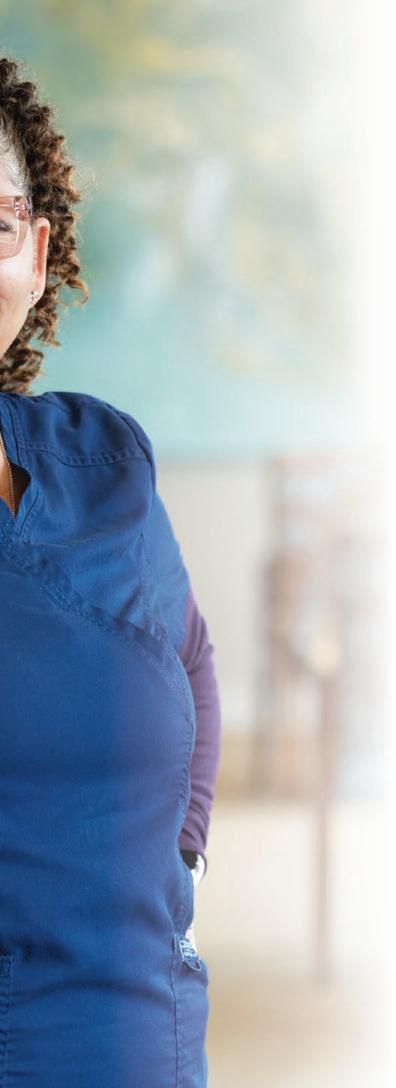
Even though allergy eye drops can offer quick relief, long-term use can
weaken blood vessels in your eyes and make them even redder.
Try to avoid known allergy triggers.
Even as you’re treating your symptoms, try to avoid allergy triggers. If, for instance, you’re allergic to pollen, stay inside with windows and doors closed when the pollen count is high. It’s also a good idea to dust furniture, vacuum rugs, and wash bedding on a regular basis.
Vision is a gift; pay attention to your eyes. If allergy symptoms are prolonged or get worse or you have pain, blurriness, or double vison, go to the doctor immediately. An eye-care specialist can determine the cause and present treatment based on sound, evidence-based medical procedures.
Dr. Courtney Morrow sees patients at Kelsey-SeyboldClinic–Kingwood.
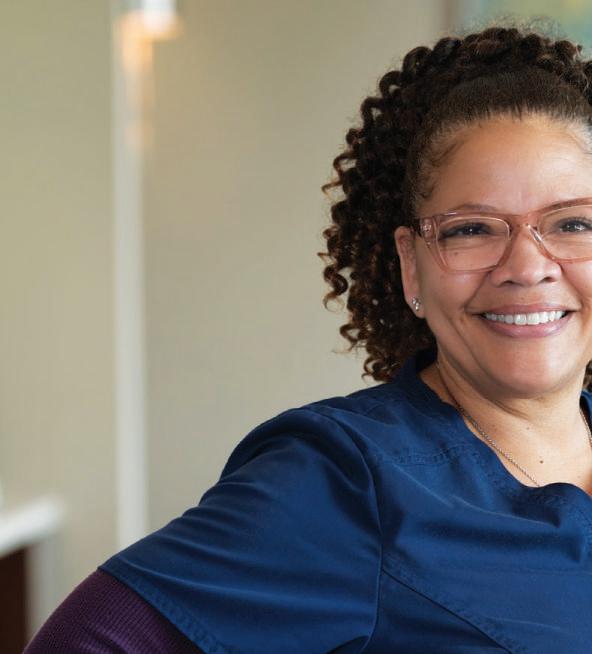


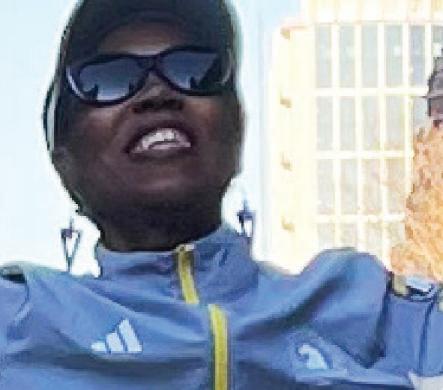

 By ReShonda Tate
By ReShonda Tate
Jetola Blair is a worldclass marathon runner.
It’s something she stumbled upon by accident, after looking for a way to honor a friend who died of leukemia. Blair wanted to do something to honor her memory and “nothing seemed right.” Someone suggested she run a half marathon for the Leukemia and Lymphoma Society.
“I didn’t want to run, but I’d raised money and I felt like a fraud because with the pace I was training, I wasn’t going to be able to participate. So I upped my training. The next thing you know, I signed up to do the Houston Half Marathon,” she said.


From there, Blair set out to conquer marathons all
over the world, and she looked forward to hitting her 10-year milestone at the Boston Marathon. Then, she tripped on a sidewalk while in New York preparing for the New York Marathon this past November. That left her ankle broken in three places. She was unable to walk, let alone run. Doctors told her to give up the dream of the Boston Marathon, which took place last month. But Blair had never been a quitter and wasn’t about to start now. She shared her story with the Defender.
Defender: Whatdidyourrecovery and rehab plan entail?







Jetola Blair: I came home and I had surgery to repair my foot. They inserted a titanium plate with seven pins. I had to learn to walk again. I credit my physical therapist because he understood what I was going through mentally. He helped me break through the mental barriers, pushing me at every session. And it hurt. There were days when I sat in the car afterward and just cried because it was so painful. But we were working as a team because when I first met with him, he said, ‘What’s your goal?’ I said, ‘I want to run the Boston
led at first because he thought I was joking. And then he realized I was serious. And he said, ‘Well, let’s figure out how to make that happen.’ I went to therapy several times a week. My therapist was very caring and understanding, and he listened to me. So I’ve always felt like the treatment was a partnership, he wasn’t just telling me what to do. We decided together what I was going to do. I’d come back and give him feedback, how it felt, what worked, what didn’t work. And then he progressed from there.
Defender: You recently completed the Boston Marathon, exceeding doctor’s expectations.What motivatedyou?


Blair: When I crossed the finish line, I was like, ‘Oh my God, I can’t believe I actually did it.’ But this particular Boston Marathon was really important to me because it would’ve been my 10th consecutive. And that’s


a big deal because when you hit consecutive race, your status changes to legacy status and you get to register early and no longer have to worry about the cutoff. And the reason Boston has a cutoff is because the number of places are fixed. It’s 30,000. That’s not going to change. If 60,000 people apply, it’s 30,000 spots. Everybody worries about that, and I no longer

Defender: You started out walking and thought you’d neverlikerunning.Howdid that change?



Blair: My coach said, “How about you try to run one minute out of each mile you walk.”
That’s how it started until I realized that I liked the running portion of it. There’s so many aspects to running. The mental part of it, the solitude. I have written books in my head, I’ve solved all the problems of the world or just that time to be and not be obligated to anybody or have to do anything; to just be. There’s a physical part of it, it makes you feel good. I like cupcakes, and running allows me to eat more cupcakes than the average person. The other part is the social aspect that I like. I live and run in Houston, but there’s this whole network all over the world.
Defender: What’syournextgoal?
Blair: There are six races that have received this designation as the world majors - New York, Boston and Chicago, Berlin, London, and Tokyo. When you complete those six, you get this big beautiful medal and you’re listed forever as a six-star finisher. So personally, I have five stars. Tokyo would’ve been my fifth star last month, but because of the injury I had to defer. But God willing, I’ll be able to do it next year and finally get my sixth year.

The Carnegie Vanguard track & field program began in 2019, but due to COVID-19, 2021 was their first true season. However, in two short years of competition, the school crowned its first UIL State gold medalist in 2023. Her name is Layla Payne, and she won the 300-meter hurdles with a time of 41.96.

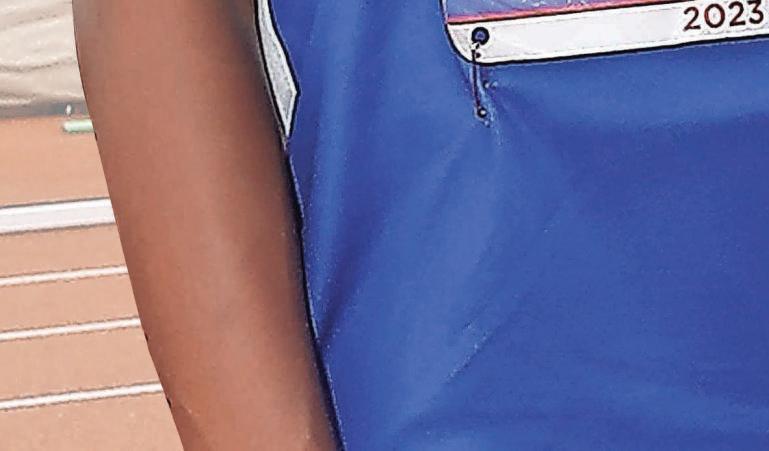

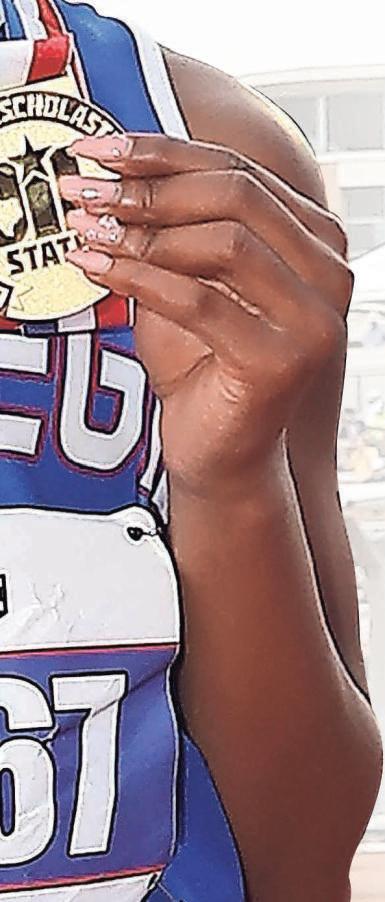
Carnegie Vanguard is a magnet Gifted and Talented program where the focus is primarily on academics. The school does participate in six UIL sporting events–volleyball, tennis, baseball, cross country, soccer and track & field–but to only minor success.

Class: 2025

Twitter: @lailapayne2025
IG: @lailapayne2025
Event: 100-meters, 300-meter hurdles

Height & weight: 5-feet-3, 115 pounds
Runners she studies: Cindy McLaughlin, Sha’Carri
Richardson
Status: Uncommitted
Favorite artists: Beyoncé, SZA
Favorite subject: History
Hobby: Dancing (Jazz, Hip-Hop)
That is, until Payne’s state victory.
“She’s the only athlete we’ve had at Carnegie to make it to state so far,” said Carnegie Vanguard girls track coach Jamie Ford. “We’re growing as an athletic program, but we’re just not known for it. Having Laila as part of this program not only expands what Carnegie can offer but also shows that
you can be a well-rounded athlete as well as a scholar. So, I think she just sets the bar real high.”
Payne comes from a family of runners. Both her parents were involved in summer track, but it was her mother who specialized in the 400-meter hurdles while in college who encouraged the Carnegie Vanguard sophomore to get involved in the sport.
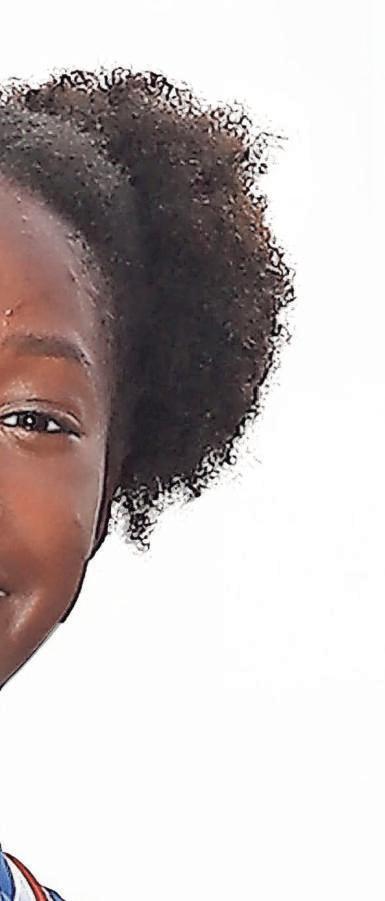
“My ex-husband and I both ran summer track, so it was inevitable that our kids were probably going to run track,” said Latosha Lewis Payne. “Everybody assumed that she was going to run hurdles because I did. But it wasn’t until her freshman year that she actually said on her own that she’d like to run hurdles.”
Payne began running the 400meter and 200-meters with Track Houston when she was 8-years-old. However, it wasn’t until her freshman year that she began running hurdles.

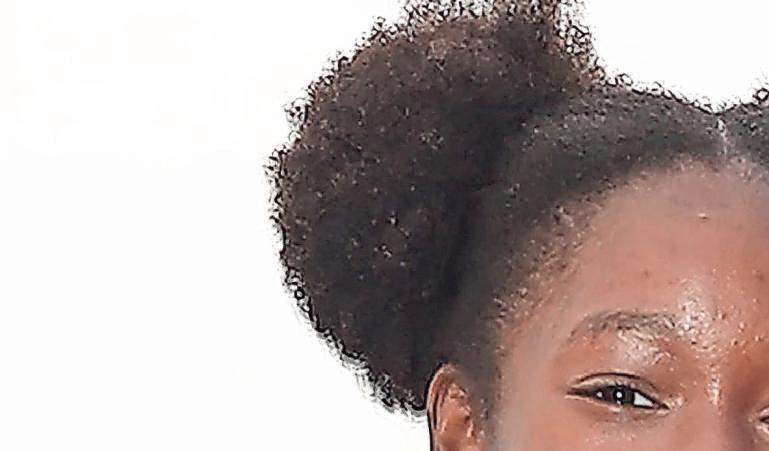
“I honestly felt behind because everybody had already developed their hurdle technique and my hurdle technique wasn’t up to the standards of other people. I’m still working on that to make sure I can get to where I need to be in the coming years,” said Payne.
“She works really hard in practice. I hope she continues to progress. She’s a very competitive, quiet young lady, who doesn’t say much. She just lets her actions speak on the track,” said Track Houston coach William Valerie.
Last season Payne made it to regionals but was unable to advance. This season, still working on her technique, Payne ran 41.96 and took first place in the UIL 5A 300-meter hurdles.
“It means a lot to me, honestly. I know there’s a lot that I can improve,” said Payne.
